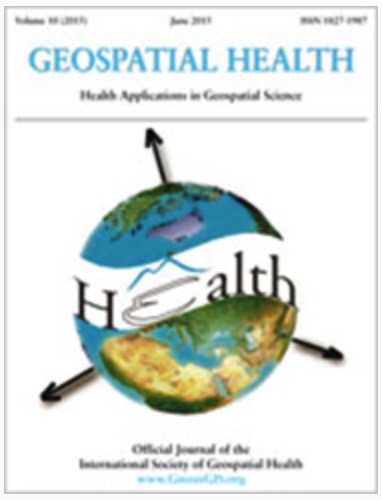Impacts of Physical Environment Perception on the Frailty Condition in Older People

Published: 18 June 2020
Abstract Views: 1797
PDF: 922
HTML: 43
HTML: 43
Publisher's note
All claims expressed in this article are solely those of the authors and do not necessarily represent those of their affiliated organizations, or those of the publisher, the editors and the reviewers. Any product that may be evaluated in this article or claim that may be made by its manufacturer is not guaranteed or endorsed by the publisher.
All claims expressed in this article are solely those of the authors and do not necessarily represent those of their affiliated organizations, or those of the publisher, the editors and the reviewers. Any product that may be evaluated in this article or claim that may be made by its manufacturer is not guaranteed or endorsed by the publisher.
Similar Articles
- Teresa M. Salgado, Rebekah Moles, Shalom I. Benrimoj, Fernando Fernandez-Llimos, Designing a model to minimize inequities in hemodialysis facilities distribution , Geospatial Health: Vol. 6 No. 1 (2011)
- Gerard C. Kelly, Chang Moh Seng, Wesley Donald, George Taleo, Johnny Nausien, Willie Batarii, Harry Iata, Marcel Tanner, Lasse S. Vestergaard, Archie C. A. Clements, A spatial decision support system for guiding focal indoor residual spraying interventions in a malaria elimination zone , Geospatial Health: Vol. 6 No. 1 (2011)
- Emmanuel Roux, Annamaria de Fátima Venâncio, Jean-François Girres, Christine A. Romaña, Spatial patterns and eco-epidemiological systems - part I: multi-scale spatial modelling of the occurrence of Chagas disease insect vectors , Geospatial Health: Vol. 6 No. 1 (2011)
- Emmanuel Roux, Annamaria de Fátima Venâncio, Jean-François Girres, Christine A. Romaña, Spatial patterns and eco-epidemiological systems - part II: characterising spatial patterns of the occurrence of the insect vectors of Chagas disease based on remote sensing and field data , Geospatial Health: Vol. 6 No. 1 (2011)
- Paul J. Maliszewski, Ran Wei, Ecological factors associated with pandemic influenza A (H1N1) hospitalization rates in California, USA: a geospatial analysis , Geospatial Health: Vol. 6 No. 1 (2011)
- Nicola Ferrè, Paolo Mulatti, Matteo Mazzucato, Monica Lorenzetto, Matteo Trolese, Dario Pandolfo, Piero Vio, Guido Sitta, Stefano Marangon, GeoCREV: veterinary geographical information system and the development of a practical sub-national spatial data infrastructure , Geospatial Health: Vol. 5 No. 2 (2011)
- Benn K.D. Sartorius, Kurt Sartorius, A new multidimensional population health indicator for policy makers: absolute level, inequality and spatial clustering - an empirical application using global sub-national infant mortality data , Geospatial Health: Vol. 9 No. 1 (2014)
- Naoko Nihei, Osamu Komagata, Kan-ichiro Mochizuki, Mutsuo Kobayashi, Geospatial analysis of invasion of the Asian tiger mosquito Aedes albopictus: competition with Aedes japonicus japonicus in its northern limit area in Japan , Geospatial Health: Vol. 8 No. 2 (2014)
- Jia-Cheng Zhang, Wen-Dong Liu, Qi Liang, Jian-Li Hu, Jessie Norris, Ying Wu, Chang-Jun Bao, Fen-Yang Tang, Peng Huang, Yang Zhao, Rong-Bin Yu, Ming-Hao Zhou, Hong-Bing Shen, Feng Chen, Zhi-Hang Peng, Spatial distribution and risk factors of influenza in Jiangsu province, China, based on geographical information system , Geospatial Health: Vol. 8 No. 2 (2014)
- André T. J. Alves, Flávio F. Nobre, The acquired immunodeficiency syndrome in the State of Rio de Janeiro, Brazil: a spatio-temporal analysis of cases reported in the period 2001-2010 , Geospatial Health: Vol. 8 No. 2 (2014)
You may also start an advanced similarity search for this article.











